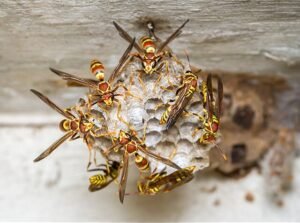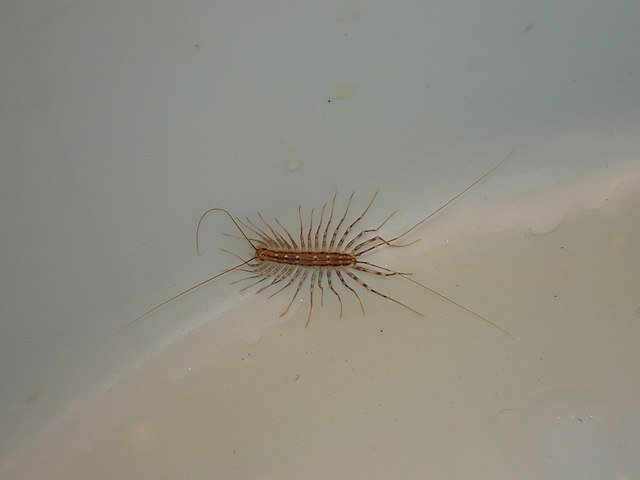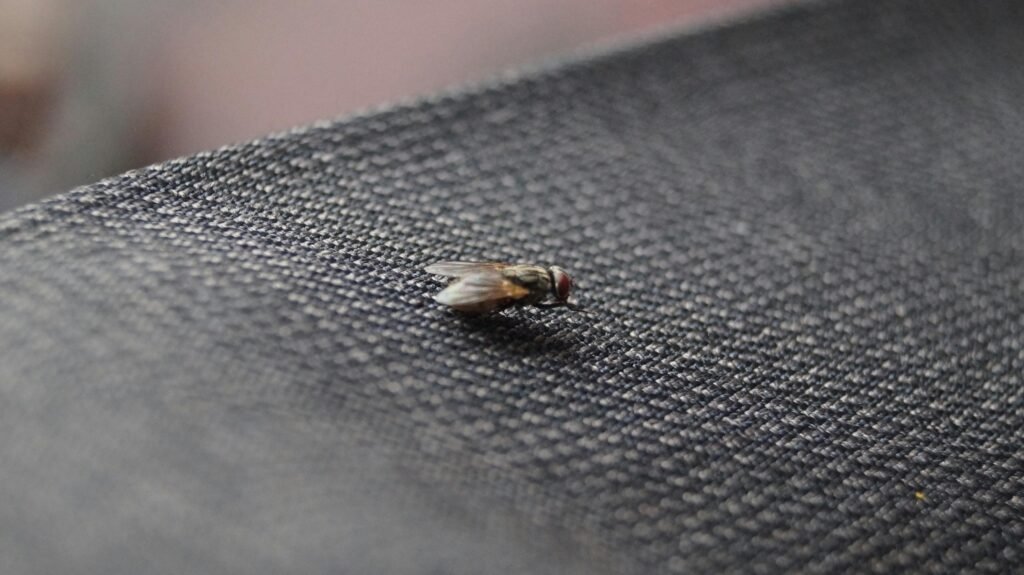Paper Wasps: Identification, Biology, Risks, and Control
 The paper wasp (Polistes spp.) is one of the most recognizable social wasps worldwide. Named for the papery texture of their open-celled nests, paper wasps are often seen hanging under eaves, branches, or porch ceilings. Unlike solitary species such as the mud dauber (Sceliphron caementarium), paper wasps live in colonies and aggressively defend their nests when disturbed.
The paper wasp (Polistes spp.) is one of the most recognizable social wasps worldwide. Named for the papery texture of their open-celled nests, paper wasps are often seen hanging under eaves, branches, or porch ceilings. Unlike solitary species such as the mud dauber (Sceliphron caementarium), paper wasps live in colonies and aggressively defend their nests when disturbed.
While they play an important role in controlling caterpillars and other plant pests, paper wasps can become dangerous when nesting near human activity. Their sting is painful, and repeated stings may cause severe reactions. For this reason, they are both admired as natural predators and feared as structural pests.
Identification
Correct identification of paper wasps is essential, as they are often confused with yellowjackets (Vespula spp.) and hornets (Vespa spp.).
Size: Adults are 16–25 mm long.
Coloration: Brown to black with yellow or reddish markings. Some tropical species show orange or red hues.
Body shape: Slender with a narrow “wasp waist” and long legs that dangle during flight.
Wings: Folded lengthwise when at rest.
Nests: Open, umbrella-shaped combs without an outer covering. Cells are exposed, unlike hornet nests which are enclosed.
Observing nests carefully from a distance helps distinguish them from other wasps.
Biology and Ecology
Social structure
Colonies usually contain one dominant queen and dozens of female workers.
Males appear later in the season for reproduction.
Workers forage, feed larvae, and defend the nest.
Nesting habits
Constructed from chewed wood fibers mixed with saliva, forming paper-like material.
Nests are attached to surfaces by a short stalk (pedicel) and contain 20–150 cells depending on species.
Favored sites include eaves, attics, tree branches, and sheds.
Feeding behavior
Adults feed on nectar, honeydew, and ripe fruits.
Larvae are fed caterpillars, flies, and soft-bodied insects.
Paper wasps help regulate populations of pests that damage crops and ornamentals.
Seasonal cycle
Colonies start in spring when queens emerge from overwintering sites.
Populations peak in summer.
In autumn, new queens mate and seek shelter, while the old colony dies off.
Global Distribution
Paper wasps are found on every continent except Antarctica.
North America: Common species include Polistes fuscatus and Polistes dominula.
Europe: Polistes dominula has expanded widely, often replacing native species.
Asia: Rich diversity across India, China, and Southeast Asia.
Australia: Several native and introduced species occur, often nesting near homes.
South America and Africa: Dozens of species thrive in tropical regions.
Their success is due to adaptability in nesting sites and diet flexibility.
Risks and Damage
Human health risks
Stings are painful and may trigger allergic reactions.
Multiple stings can be dangerous, especially for children and sensitive individuals.
Colonies near doors, patios, or play areas pose significant risks.
Structural concerns
Nests deface buildings with unsightly stains.
Abandoned nests may harbor scavenger insects.
In rare cases, large populations near attics can become a persistent nuisance.
Agricultural role
Beneficial predators of caterpillars, aphids, and other crop pests.
Help pollinate flowers, though less efficiently than bees.
In vineyards and orchards, they may feed on ripening fruit, causing minor damage.
Signs of Infestation
Umbrella-shaped nests under eaves, porches, or window frames.
Increased wasp activity around flowers, fruit, or garbage.
Dangling flight posture, distinct from hornets or bees.
Aggressive defense of nests when approached within a few feet.
Seasonal presence: Heavy activity in late summer when colonies are largest.
Control Methods
Prevention
Seal cracks and crevices in structures to reduce nest sites.
Keep garbage sealed to avoid attracting wasps.
Reduce standing water where wasps may drink.
Physical removal
Nests can be scraped off when inactive (winter or early spring).
Protective clothing should be worn during removal.
Nighttime removal is safer, as wasps are less active.
Chemical control
Aerosol sprays with pyrethroids or other insecticides may be applied directly to nests is the main chemichal wasp control method.
Residual sprays around eaves discourage new nesting.
Professional pest control may be required for high nests or multiple colonies.
Advanced Approaches
Wasp traps: Commercial or homemade traps reduce foraging workers but rarely eliminate colonies.
Eco-friendly repellents: Peppermint oil and clove oil sprays show deterrent effects.
Integrated pest management (IPM): Combining prevention, monitoring, and targeted control.
Biological research: Studies explore pheromones to disrupt nest establishment.
Airports, food facilities, and sensitive industries may use systematic monitoring to prevent paper wasp hazards.
Cultural and Historical Context
Paper wasps have long been part of human culture:
Ancient texts in Asia describe wasp nests as omens of fortune or misfortune.
In Europe, wasps were linked to seasonal change, appearing each spring after winter dormancy.
Farmers historically tolerated paper wasps because they controlled caterpillar outbreaks in fields.
Today, urban dwellers often fear them, while gardeners may welcome their predatory habits.
This dual role reflects the fine balance between ecological benefit and human risk.
FAQ Section
Q1: Do paper wasps sting humans?
Yes. They sting when threatened or when their nest is approached too closely.
Q2: Are paper wasps aggressive?
They are less aggressive than yellowjackets but will defend nests vigorously.
Q3: What do paper wasps eat?
Adults consume nectar and fruit juices. Larvae are fed caterpillars and other soft-bodied insects.
Q4: How long do paper wasp colonies last?
One season. Colonies die in autumn, and only new queens survive winter.
Q5: How can I remove a paper wasp nest safely?
Wear protective clothing and remove it at night with insecticide or by scraping when inactive.
Q6: Are paper wasps beneficial insects?
Yes. They control crop pests and contribute to pollination.
Q7: Can paper wasps reuse old nests?
Usually not. New queens build fresh nests each spring.
Q8: How do paper wasps differ from hornets?
Hornets build enclosed nests, are larger, and more aggressive. Paper wasps build exposed umbrella-shaped nests.
Final Thoughts
The paper wasp (Polistes spp.) is a striking example of how insects can be both allies and threats. They regulate caterpillar and aphid populations, indirectly protecting crops and gardens, yet their painful stings and habit of nesting near homes make them one of the most common nuisance wasps worldwide.
For homeowners, prevention is key: limiting access to sheltered spaces, reducing food attractants, and removing small nests early in the season. When colonies grow large or are located in high-risk areas like entrances or patios, professional pest control is the safest option.
Going forward, research into eco-friendly repellents and pheromone-based strategies may help reduce conflicts between humans and paper wasps. The challenge is not elimination but management, allowing us to benefit from their ecological role while minimizing danger.
Disclaimer
This article is for informational purposes only. Pest control laws and approved chemicals vary by country. For best results and legal safety, we strongly recommend contacting a licensed pest control professional in your local area. Always make sure that the pest control technician is properly certified or licensed, depending on your country’s regulations. It’s important to confirm that they only use approved products and apply them exactly as instructed on the product label. In most places in Europe, UK, or USA, following label directions is not just best practice—it’s the law.
Author Bio
Nasos Iliopoulos
BSc Agronomist & Certified Pest Control Expert
Scientific Director – Advance Services (Athens, Greece)
Licensed Pest Control Business – Ministry of Rural Development & Food (GR)
References
Wikipedia - paper Wasp
Penn Universite European papaer wasp


